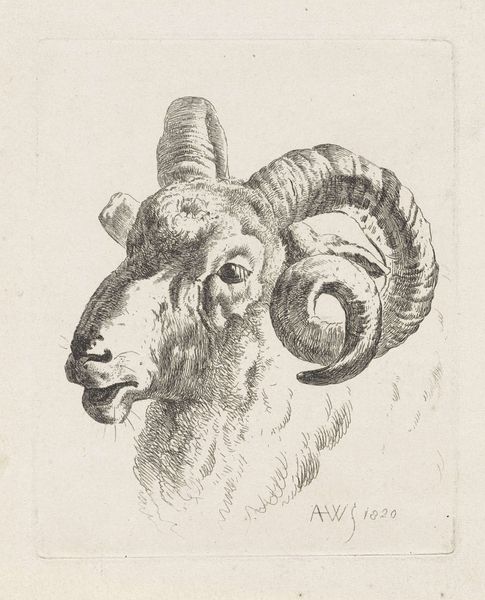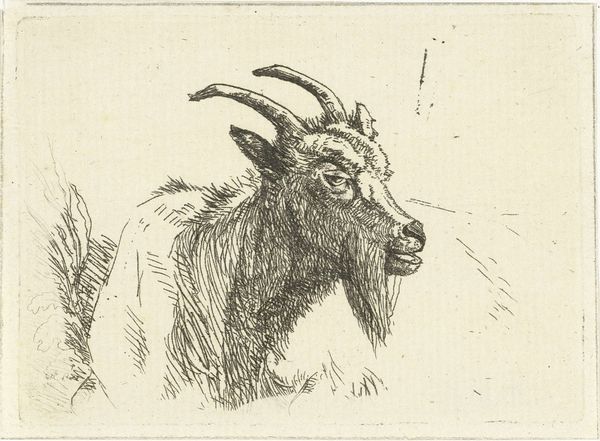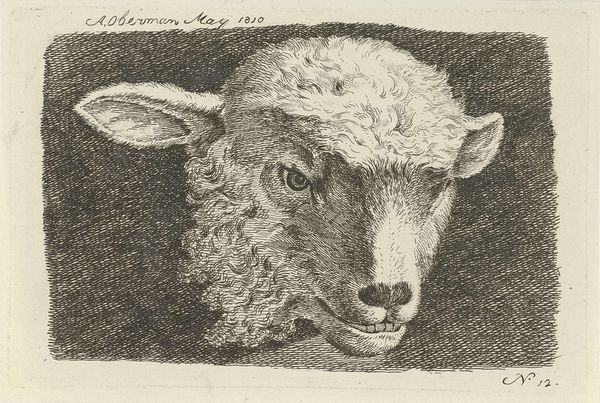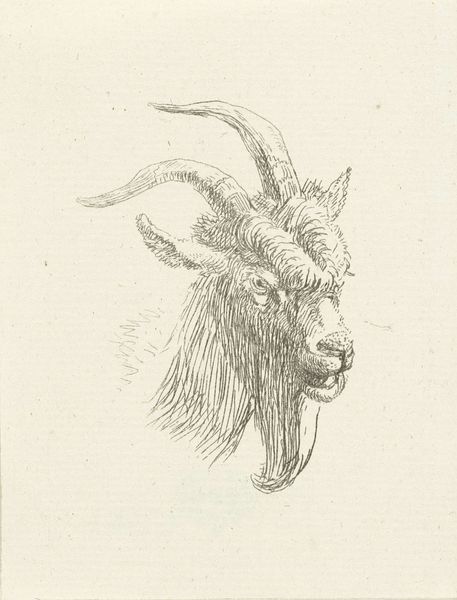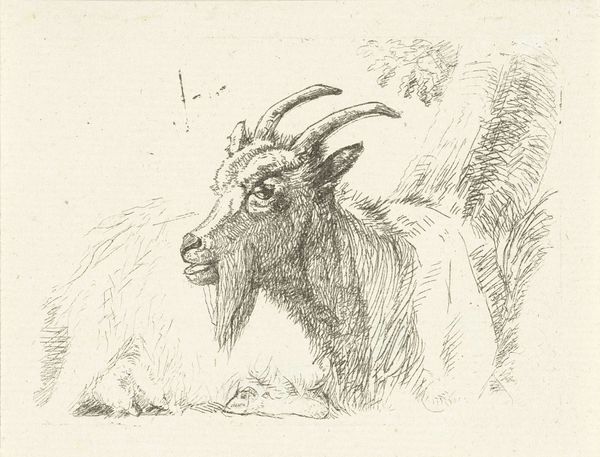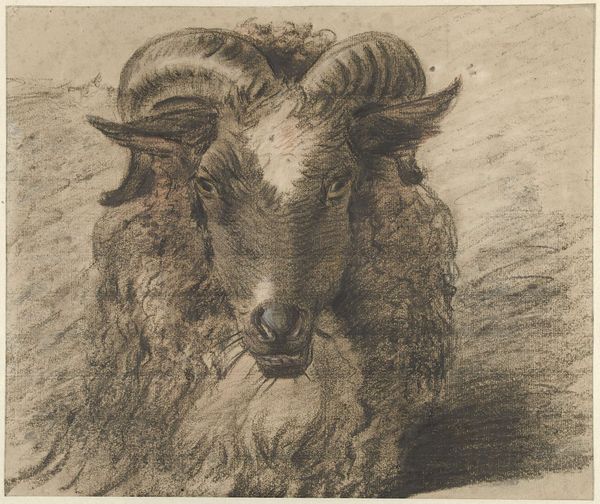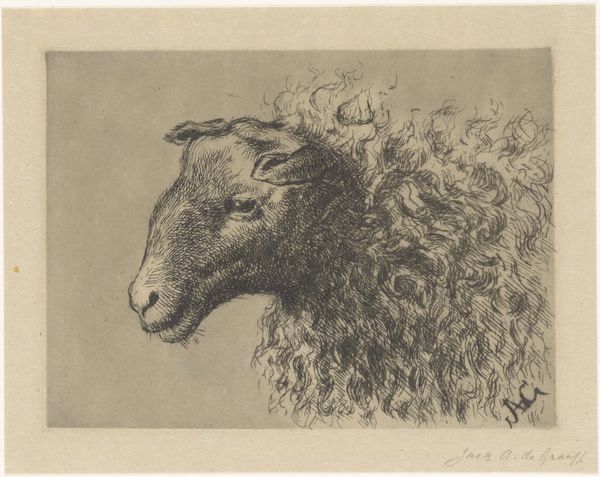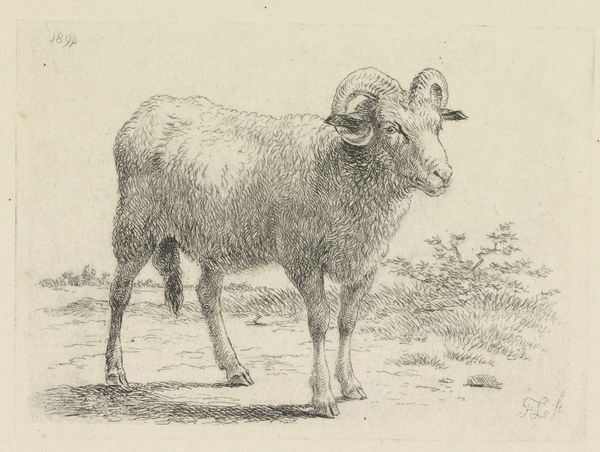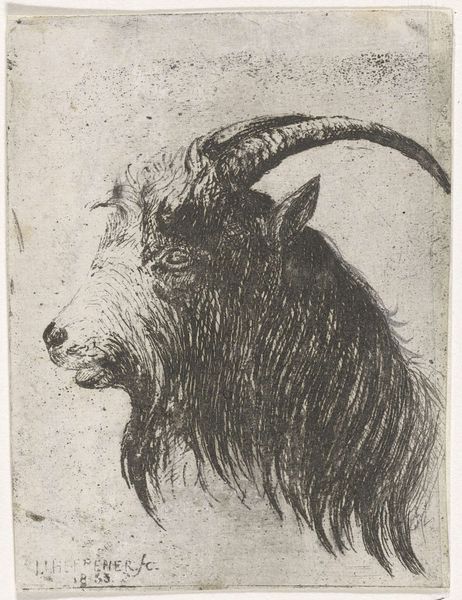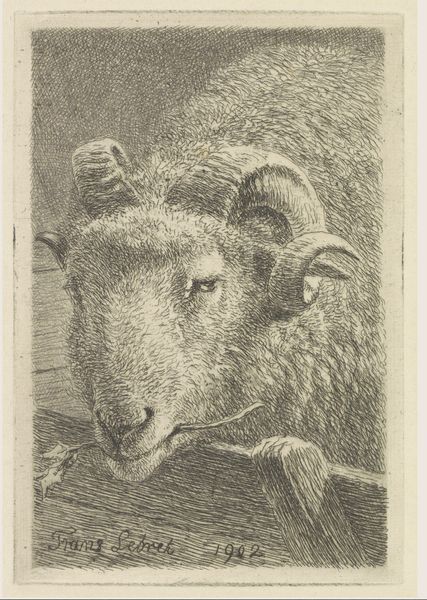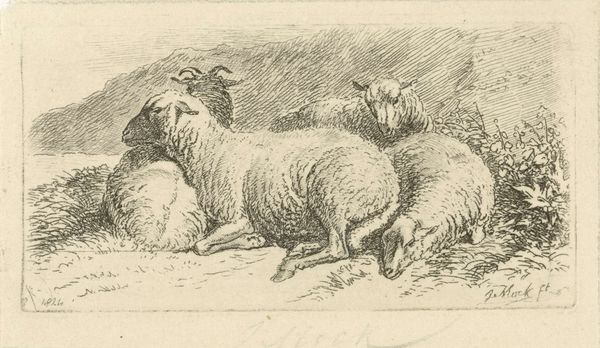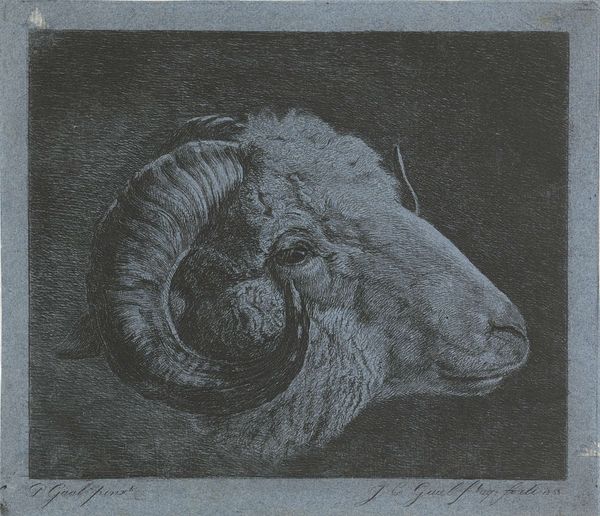
drawing, paper, ink
#
portrait
#
drawing
#
paper
#
ink
#
romanticism
#
realism
Dimensions: height 47 mm, width 83 mm
Copyright: Rijks Museum: Open Domain
Johannes van Cuylenburgh etched this head of a ram around 1815. The ram, with its imposing curled horns, emerges as a potent symbol. Across millennia, the ram has been a vessel of meaning—associated with Aries, the zodiac sign that heralds the spring equinox, symbolizing new beginnings and creative force. In ancient Egypt, the ram was linked to virility and power, embodying the god Khnum, the creator. One cannot help but recall the Golden Fleece, a treasure that drove Jason and the Argonauts, in Greek mythology. This is but one strand of symbolic meaning, among many others. Observe how the ram's horns, deeply rooted in ancient traditions, have journeyed through time. Think of Alexander the Great, who embraced the ram's horns to assert his divine right to rule. These symbols reveal an enduring power, resonating through cultural memory. The gaze of the ram, direct and unflinching, evokes a primal response. As we stand before this image, we are not merely viewing art, but engaging with a symbol. It is a symbol that has traversed epochs and cultures, perpetually reborn, and forever imprinted upon the human psyche.
Comments
No comments
Be the first to comment and join the conversation on the ultimate creative platform.
